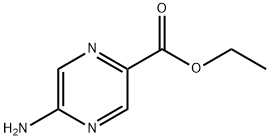The discovery of a unique topological chiral crystal that can boost hydrogen production by water hydrolysis by 200 - fold is astonishing. But how exactly does this crystal structure enable such a significant efficiency increase? What specific methods are used to manipulate the electron spin within the crystal? Are there any challenges in mass - producing this crystal for large - scale industrial applications? And how does this new catalyst compare to existing ones in terms of cost - effectiveness and environmental friendliness? Will this breakthrough accelerate the widespread adoption of hydrogen as a clean energy source?
Unique Topological Chiral Crystal: A 200 - fold Efficiency Boost in Hydrogen Production by Water Hydrolysis?
Related Encyclopedia
Related Products More >
-
- CNY equest For Quotation
-
- CNY equest For Quotation
-
- 7757-93-11
- CNY equest For Quotation
-
- 7757-93-10
- CNY equest For Quotation
-
- 7757-93-9
- CNY equest For Quotation
-
- CNY equest For Quotation
-
- CNY equest For Quotation
-
- CNY equest For Quotation




 沪ICP备2021018848号-5
沪ICP备2021018848号-5

Now, hydrogen is a great clean fuel. It's abundant in source and has a high energy density. It can be used to replace fossil fuels in many areas like transportation and power generation. But right now, 99% of hydrogen comes from the reforming of fossil fuels, and this process releases a lot of carbon dioxide. So, water hydrolysis, which breaks water molecules into hydrogen and oxygen to produce clean hydrogen, is a very promising green energy path.
However, water hydrolysis also has big challenges. One of them is the oxygen evolution reaction, which is like a "stumbling block" that limits the improvement of its efficiency. The oxygen evolution reaction involves a series of complex and slow electron transfer steps. This greatly reduces the efficiency of the water decomposition process and thus affects its cost - effectiveness. Because of this, scientists are actively looking for new ways to speed up the oxygen evolution reaction.
In this latest study, the scientists designed a topological chiral crystal made up of elements like rhodium, silicon, tin, and bismuth. The atoms in these crystals have a unique left - handed or right - handed arrangement structure. This allows the crystals to interact with light and other chiral molecules in a specific way. Moreover, the unique composition of this crystal can efficiently control the spin of electrons inside it. This makes the electrons move more quickly to the oxygen - generating sites during the water decomposition process.
The acceleration of electron transfer has significantly increased the overall reaction rate. Compared to using traditional catalysts, the addition of this new catalyst has increased the efficiency of the water decomposition process by 200 times. But currently, the developed catalyst still contains rare elements. However, the scientists say they will soon come up with a highly efficient and sustainable catalyst.
In conclusion, this research on the topological chiral crystal is a really big step forward in the field of hydrogen production by water hydrolysis. It shows great potential to solve the problems in this area, and we are looking forward to seeing the more efficient and sustainable catalyst they will develop in the future.